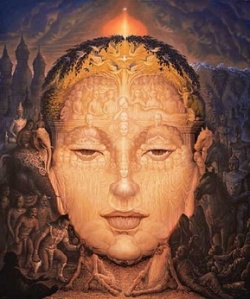Saṃmitīya
The Saṃmitīya (Sanskrit; Chinese: 正量部; pinyin: Zhèngliàng Bù) were one of the eighteen or twenty early Buddhist schools in India, and were an offshoot of the Vātsīputrīya sect. Like its predecessor, it claims the person (Sanskrit: pudgala) as a carrier of skandhas endures, and as such was a representative (perhaps the most prominent one) of the Pudgalavāda schools.
The Tibetan historian Buton Rinchen Drub wrote that the Mahāsāṃghikas used Prākrit, the Sarvāstivādins used Sanskrit, the Sthaviravāda used Paiśācī, and the Saṃmitīya used Apabhraṃśa. History
The distinguished Buddhologist Étienne Lamotte, using the writings of the Chinese traveler Xuanzang, asserted that the Saṃmitīya were in all likelihood the most populous non-Mahāyāna sect in India, comprising double the number of the next largest sect, although scholar L. S. Cousins revised his estimate down to a quarter of all non-Mahāyāna monks, still the largest overall. The Saṃmitīya sect seems to have been particularly strong in the Sindh, where one scholar estimates 350 Buddhist monasteries were Saṃmitīya of a total of 450. This area was rapidly Islamized in the wake of the Arab conquest.
The end of the Saṃmitīya sect appears to coincide with the overall decline of Buddhism in India. Conflicts with other Buddhists
The Chinese pilgrim Xuanzang reported that the Saṃmitīya of Sindh "have narrow views and attack the Mahāyāna," while the Tibetan historian Tāranātha reported that the Saṃmitīya were staunchly anti-Mahāyāna and anti-Vajrayāna, with Saṃmitīya monks from the Sindh burning tantric scriptures and destroying a silver image of Hevajra at Vajrāsana monastery in Bodh Gaya.
In the biography of Xuanzang, it is recounted that an elderly brahmin and follower of the Saṃmitīya sect named Prajñāgupta had composed a treatise in 700 verses which opposed the Mahāyāna teachings. In response, while living at Nālandā, Xuanzang wrote a Sanskrit work in 1600 verses to refute this text, called The Destruction of Heresy. In this context, the Saṃmitīya sect was regarded as heretical.
